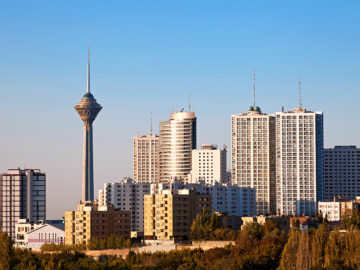This museum was made in 1977 in Tehran, but closed down a year later, then reopened in 1979 and was closed down again 6 years later. The museums unfortunate fate continued and it was successively closed down and reopened until in 1999, it was permanently opened and continued its work until today. The objects displayed in this museum have a historical range of prehistoric time to the 19th century. The museum was built to show the evolution of art in different periods of time and was named after the great Persian Miniaturist, Reza Abbasi.
Reza Abbasi was a famous artist living in the Safavid time and known for his artistic breakthrough. The Human being, their appearance, their idol life and pleasures became the theme of this artists painting. For the first time in the history of Iran’s art, an artist signed his works and wrote date and crucial information about it. His paintings are not crowded, usually one or two people in the center with a background that resembles a garden with simple flowers that some were painted with gold.
The objects displayed in this museum have a historical range of prehistoric time to the 19th century. The museum was built to show the evolution of art in different periods of time and was named after the great Persian Miniaturist, Reza Abbasi.
The museum has two sections, the pre-Islamic art section and Islamic art section and five halls. The Islamic section itself is divided to 4 halls: Islamic Hall 1, Islamic Hall 2, Miniature Hall and Calligraphy Hall. The objects are arranged based on the period they belonged to and therefore, it is very easy to see the transformation of art and compare different period together. The contrast of art from pre-Islamic to Islamic era is also notable that is a proof of Islam’s influence on the minds of the creators of such arts.
The pre-Islamic section displays works retrieved form historical sites of Kermanshah, Azerbaijan, North of Iran and Lorestan. The oldest object belongs to the third Millennium BC and continues up to the 7th and 8th century AD. The most common of these objects are dishware, pots and farming tools. Islamic Hall 1 displays objects from early Islamic Period to Seljuk time. While clay was the prominent material of Pre-Islamic time, in this time metals become more popular. The Islamic Hall 2 continues and displays objects from Seljuk until Qajar; again, metals like brass are dominant here. The Human and Animal patterns, light glaze, Inlayed work, Carving, and paintings are the decorations most commonly used in this time.
The fourth hall is the Miniature Hall with miniature work especially from different versions of Shahnâme from 14th century to the Qajar Dynasty. The highlight of the hall is paintings of Reza Abbasi, the man that the museum is named after. This hall is known for its diversity. Nearly all Iranian Schools of Art are displayed here which adds to the importance of the place. The last hall or the Calligraphy Hall is where visitors can see the masterpieces of Iranian calligraphy, in different styles, with different mediums over various objects and each belonging to a period of Iran’s History. The theme of the works includes lines from Quran, quotes from Imams and prophet, poems by different poets and some books in astrology.
The museum has a very strong research section and library with an archive of some of the best magazines of Iran. The conference hall, gallery, publication and education center make this museum one of the top museums of Iran.

